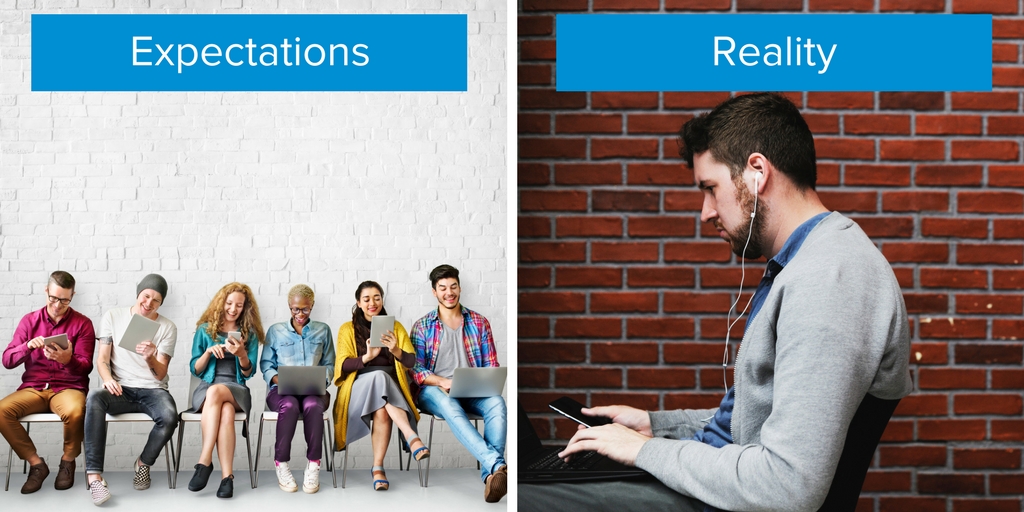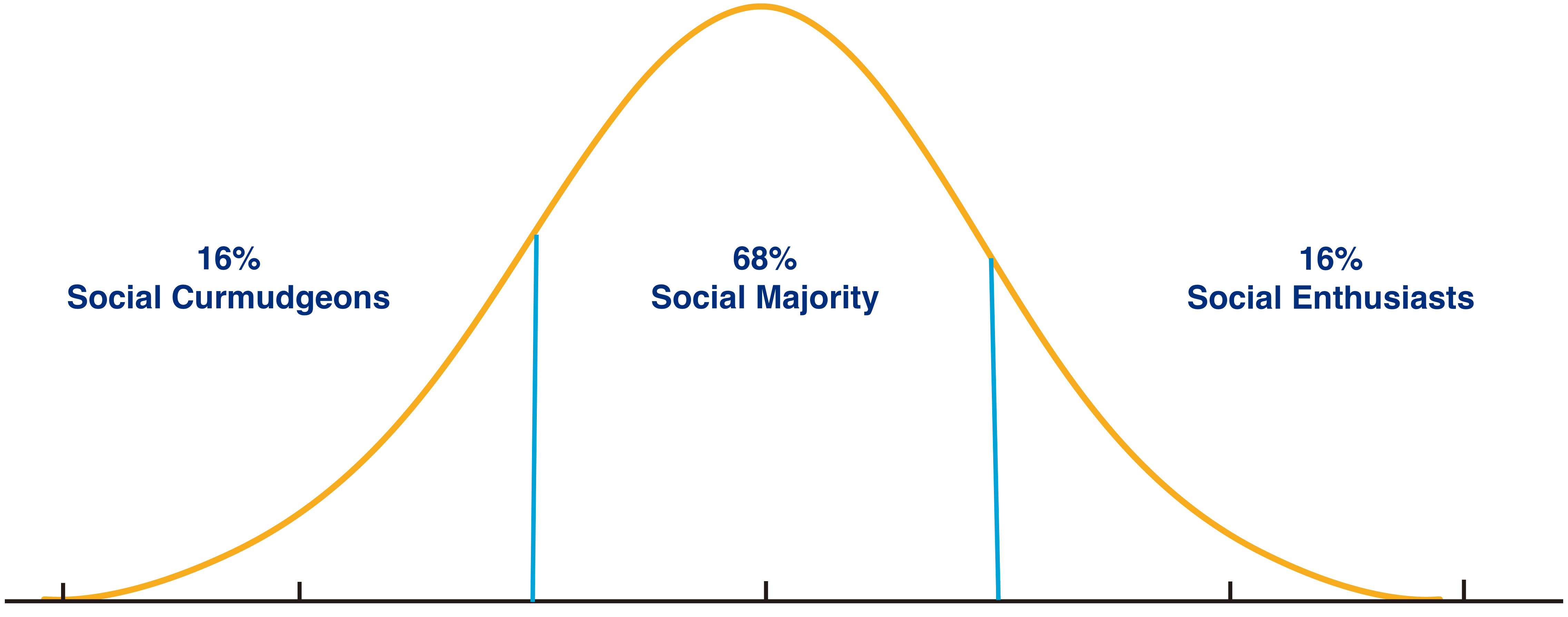Building a healthy employee advocacy program: Who to onboard first?

Table of contents
Undoubtedly, employees are the strongest engine behind advocating for your brand. Yet, one of the questions puzzling many companies looking to embark on an employee advocacy program is, “Where do I start? Who do I onboard first?”.
As with any new initiative, a successful advocacy program relies heavily on how it is implemented and to whom. Transitioning employees into advocates involves a thorough and engaging approach that drives positive ROI.
While that’s easier said than done, the purpose of this piece is twofold: first, to help you set realistic expectations about the onboarding of employee advocates, and second, to visualize a practical approach to supporting and expanding a healthy advocacy program that includes diverse roles and personalities.
Set realistic expectations
When companies scramble to implement an employee advocacy program, their initial goal is always “to onboard the entire company.” It is in their best interests to have as many team members share content as possible to attain maximum reach, engagement, and, more importantly, lead generation.
While it’s great to be ambitious, having a “100% engaged or nothing” approach elicits unrealistic expectations, ultimately leading to disappointment and failure. In other words, by overestimating the adoption of your program, you end up falling for the myth that everyone in the company will share content regularly.
When it comes to employee advocacy, there’s no such thing as 100%—naturally, some employees will share more, some will share less, and others will share nothing.

For a healthy advocacy program, you need to understand your organization’s culture. Identify and embrace the different personalities that make up your company. Ask yourself questions like: Who’s currently active on social media? Which team members are enthusiastic about social media? How will I encourage my less “social” employees to establish their own presence and eventually become involved in the program?
Your existing culture can (and will) support a healthy employee advocacy program; it’s just a matter of accepting that not everyone will love advocacy the way you do.
Start by focusing your resources on like-minded individuals—they are the cornerstone of a healthy employee advocacy program. This brings me to my next point: What does a “healthy” employee advocacy program actually look like?
Create a healthy employee advocacy program
Start with a pilot program to hit the ground running with employee advocacy. If launched successfully, this pilot run will help set the tone for a very healthy advocacy program, one that reflects an average-looking bell curve.

As you can see, this bell curve comprises three main chunks, each representing a unique group of employees. The 16% on the left side are your “Social Enthusiasts”, the 68% in the middle are your “Social Majority”, and the 16% on the right side are your “Social Curmudgeons”.
So, who are these individuals, and how do they influence your pilot – and your advocacy program at large?
The social enthusiasts
Onboarding employee advocates is akin to growing a business – it’s a journey, not a swift process.
Imagine that you were looking to open a restaurant. In the first round of recruitment, you’ll bring on individuals who share your vision, know how to network, and have an entrepreneurial spirit.
Similarly, the Social Enthusiasts are the first few individuals you want to have on your pilot program. Not only do they have a fully fleshed-out social presence on LinkedIn, Twitter, or Facebook, but they also love to stay up-to-date with industry insights and company-related content.
Said differently, these guys are your social media all-stars, the social butterflies who will champion your brand on social media and put a positive spin on a dull industry.

Stereotypically, the Social Enthusiasts tend to be your customer-facing employees. Namely, sales, marketing, and support teams are already well-connected to influential people. It’s also part of their role to be social and outgoing and build trusting relationships with their target audience.
As such, they are your best bet for launching a successful pilot program and showing immediate results. All they need is a formal scheme that provides them with proper training, company policies, relevant content, and an easy-to-use tool to discover and share content.
The social majority
Considering your pilot is in full swing, you can start onboarding more employees – this time from the Social Majority chunk. These are the healthy middle who hold the mindset of “I love where I work and I want to help out where I can”. Sometimes, the Social Majority are the followers; when they see the Enthusiasts sharing content and getting recognized for it, they also want in!
Although they have relevant connections on social media (which you definitely want to tap into), they aren’t as driven as the “Social Enthusiasts.” They’re not going to go the extra mile of sharing content and being constantly active on social. Therefore, the best way to onboard the Social Majority is by getting buy-in from leadership or exposing them to the pilot program results.
You see, a healthy program is a contagious program!
Once the Social Majority sees that advocacy works, they’ll feel empowered by it. The social savviness and high-energy (showcased by the Enthusiasts) will spread throughout the organization until it motivates the “Social Majority”, and eventually (if you get lucky) encourage the “Social Curmudgeons” to get onboard as well.
The social curmudgeons
By definition, a “curmudgeon” is a crusty, ill-tempered, and usually old man. You know…like this guy:
But in this case, we will apply the term to any employee who is (in nicer words) a downer or a social deviator.
The Social Curmudgeon is someone who (excuse my language) doesn’t really give a s*** about social media marketing, let alone your next employee advocacy program. Since they’re not a marketer by trade and certainly not hired to be one, the Social Curmudgeons would tell you they have “better things to worry about.”
When I first introduce people to the idea of the Social Curmudgeon, their immediate reaction is laughter. Next, they share with me, “Oh, I totally know a Social Curmudgeon, it’s that guy working in….” – perhaps the curmudgeon is not a man, maybe it’s a woman…the bottom line is, we can all identify at least one curmudgeon working in our office.
Looking at the worst-case scenario, launching a pilot with the Social Curmudgeons will have a negative effect on your whole program. Their lack of enthusiasm will trickle down the organization, demotivating employees and resulting in complete program failure.
While the Social Curmudgeons are not your first choice, you shouldn’t eliminate them from your program altogether.
Recommended for further reading
Don’t underestimate the social curmudgeons
The Social Curmudgeons are often perceived as “too techy and unsocial” to become brand advocates, let alone to bring desirable results. But the truth is, everyone in your company can benefit–and benefit from–advocacy.
Those who work behind the scenes, such as Development, Implementation, HR, Legal teams, and so on, have a relevant audience territory that you want to capitalize on and reach with content. Although this audience may not be looking to buy directly from the Social Curmudgeons, they may still be interested in buying from your company or know someone who could benefit from your product or service.
And as hard as it is to believe, these Social Curmudgeons may one day transform into your best advocates. They are just the type of people who have to see it to believe it. They will also want to get on board once they witness how the Social Enthusiasts and the Social Majority benefit from sharing valuable content and becoming thought leaders.
If you’ve included the Social Curmudgeons in your program, you’ve attained the ideal “100% company-wide employee advocacy program”.
Diversify your Program for Optimal Health
When rolling out employee advocacy, tap into your Social Enthusiasts – the social-savvy, customer-facing employees who will be your main players. Once you’ve introduced the pilot program to them, gradually onboard the Social Majority and slowly expand throughout the organization until you achieve a 100% employee advocacy program. Don’t forget about some of the other roles, like the Social Curmudgeons, who can also contribute to your program.
The key is to diversify the types of personalities you bring on board. Whether employees come from different roles, generations, and cultures, their group synergy will strengthen your program’s overall performance.
In other words, don’t panic if some employees are not sharing enough content! Take the time to understand the role of every advocate; a healthy employee advocacy program manifests itself by bringing together the Social Enthusiasts, the Social Majority, and the Social Curmudgeons under one big umbrella.





